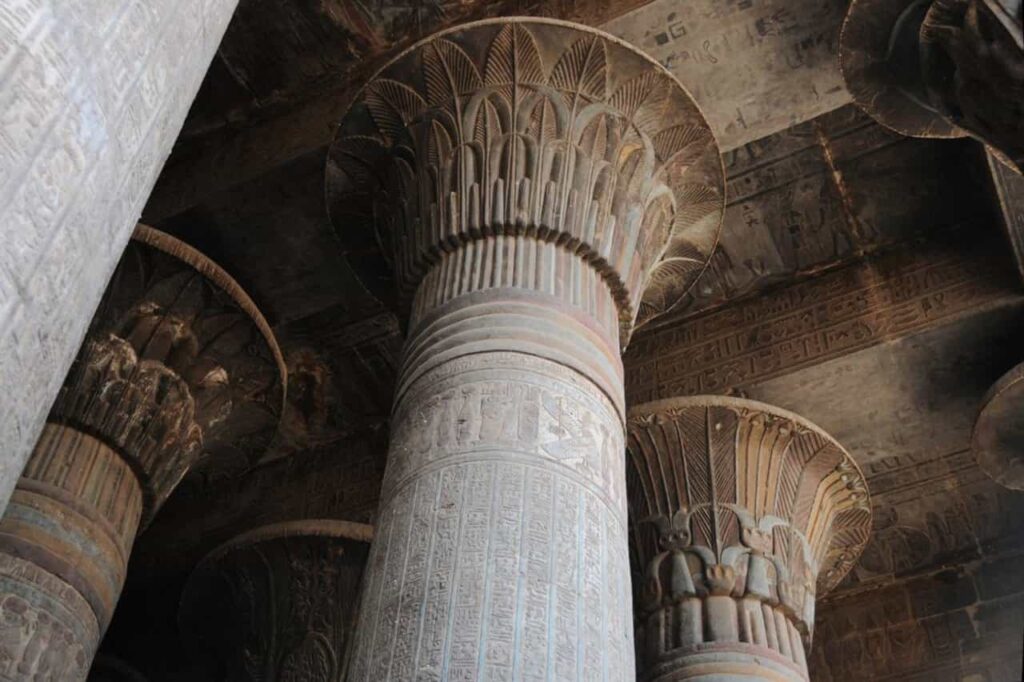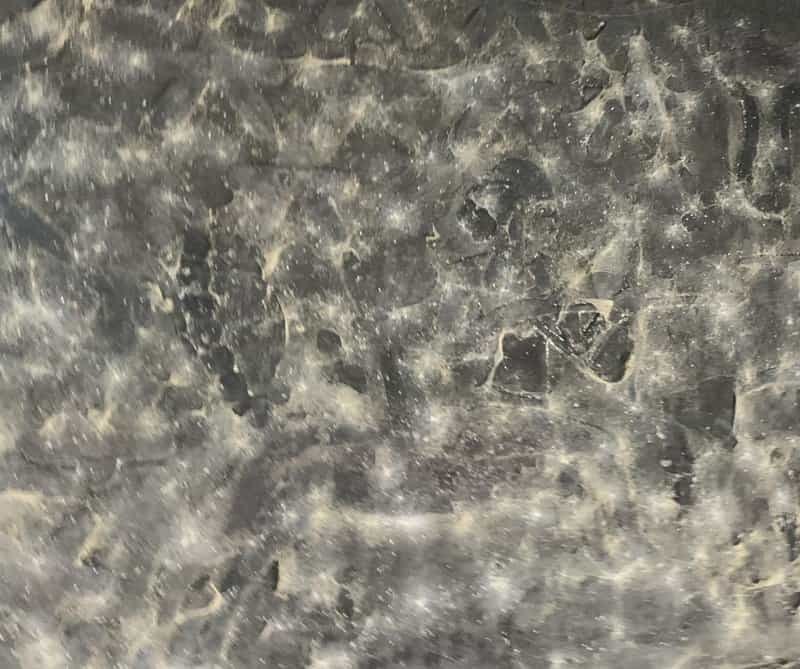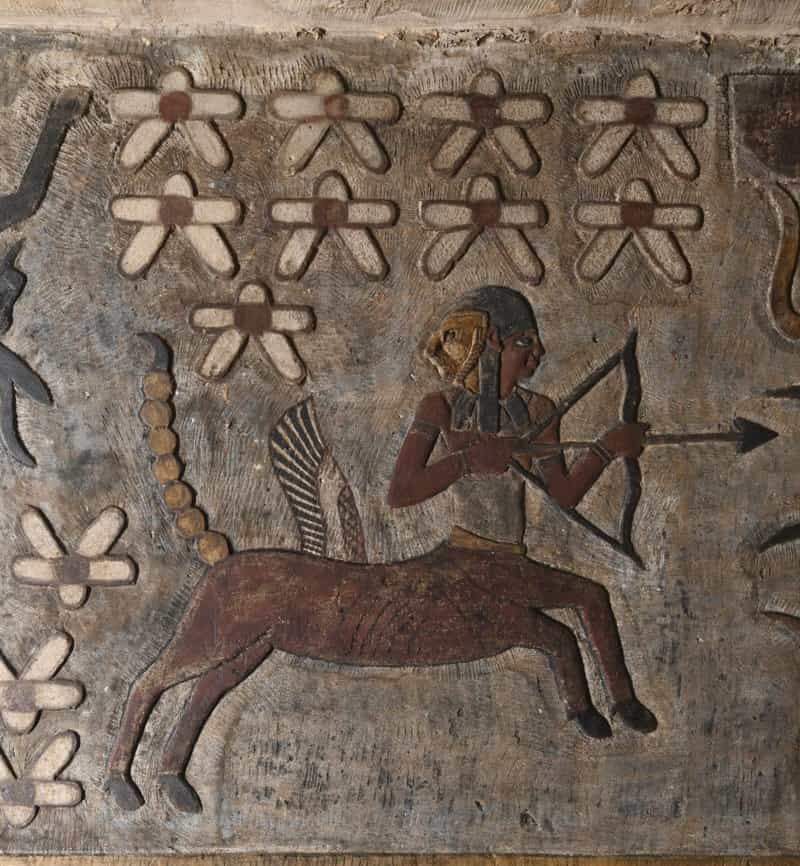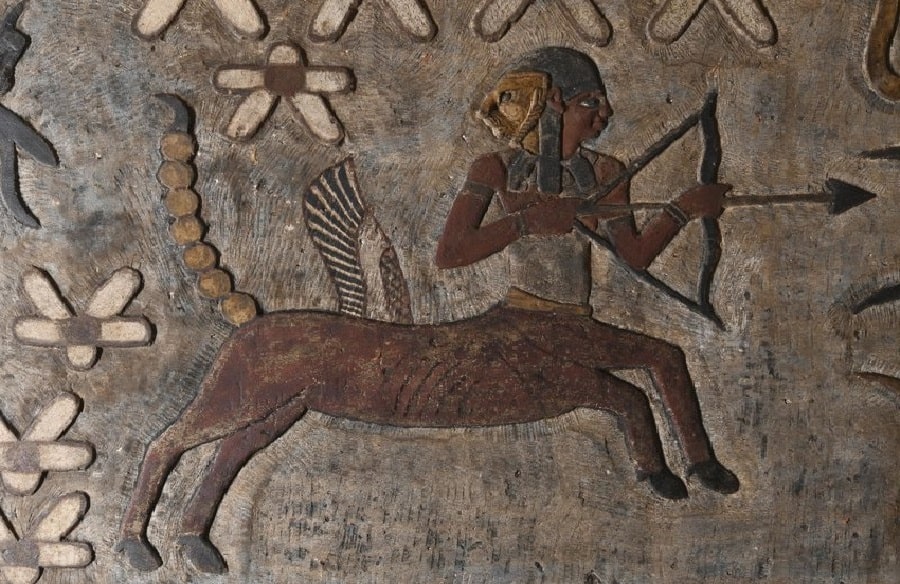The Ptolemaic temple of Esna, located 60 kilometers from present-day Luxor in Upper Egypt, is dedicated to the ram-headed creator god Khnum and is one of the best-preserved structures in the country. The temple is famous for its magnificent astronomical ceiling and particularly for the hieroglyphic inscriptions it houses.
Colors Come to Life
Since 2018, a German-Egyptian mission, consisting of Egyptian archaeologists and restorers led by Hisham El-Leithy from the Egyptian Ministry of Tourism and Antiquities, along with specialists from the German University of Tübingen led by Egyptologist Christian Leitz, has been working in this area of the temple.
Since then, experts have been working to recover the original colors and inscriptions engraved on its walls, freeing them from the dirt that has covered them for millennia. It is undoubtedly an ambitious project.
During the last work campaign carried out on the wonderful astronomical ceiling of the building, the team of researchers discovered another series of reliefs painted in bright colors.
They form a complete representation of the signs of the Zodiac, planets such as Jupiter, Saturn, and Mars, as well as a series of stars and constellations. “Depictions of the zodiac are very rare in Egyptian temples. The zodiac itself is part of Babylonian astronomy and did not appear in Egypt until Ptolemaic times,” explained Leitz.
Fabulous Beings
Meanwhile, Daniel von Recklinghausen, a researcher at the University of Tübingen, commented that “the zodiac was used to decorate private tombs and sarcophagi and was of great importance in astrological texts, such as horoscopes found inscribed on fragments of pottery. However, it is rare to find it in temple decoration: apart from Esna, only two fully preserved versions remain, both in the Dendera temple.”
The painstaking restoration carried out by experts has brought to light even more surprising elements. For example, there are colorful images of snakes, crocodiles, and fabulous beings, such as a snake with the head of a ram or a bird with the head of a crocodile, a snake’s tail, and four wings.
The work has also revealed the presence of hitherto unknown inscriptions, hidden under the thousand-year-old layers of dust and soot. Who knows what magnificent work the Esna Project may reveal in the future.
Source: Carme Mayans, National Geographic












